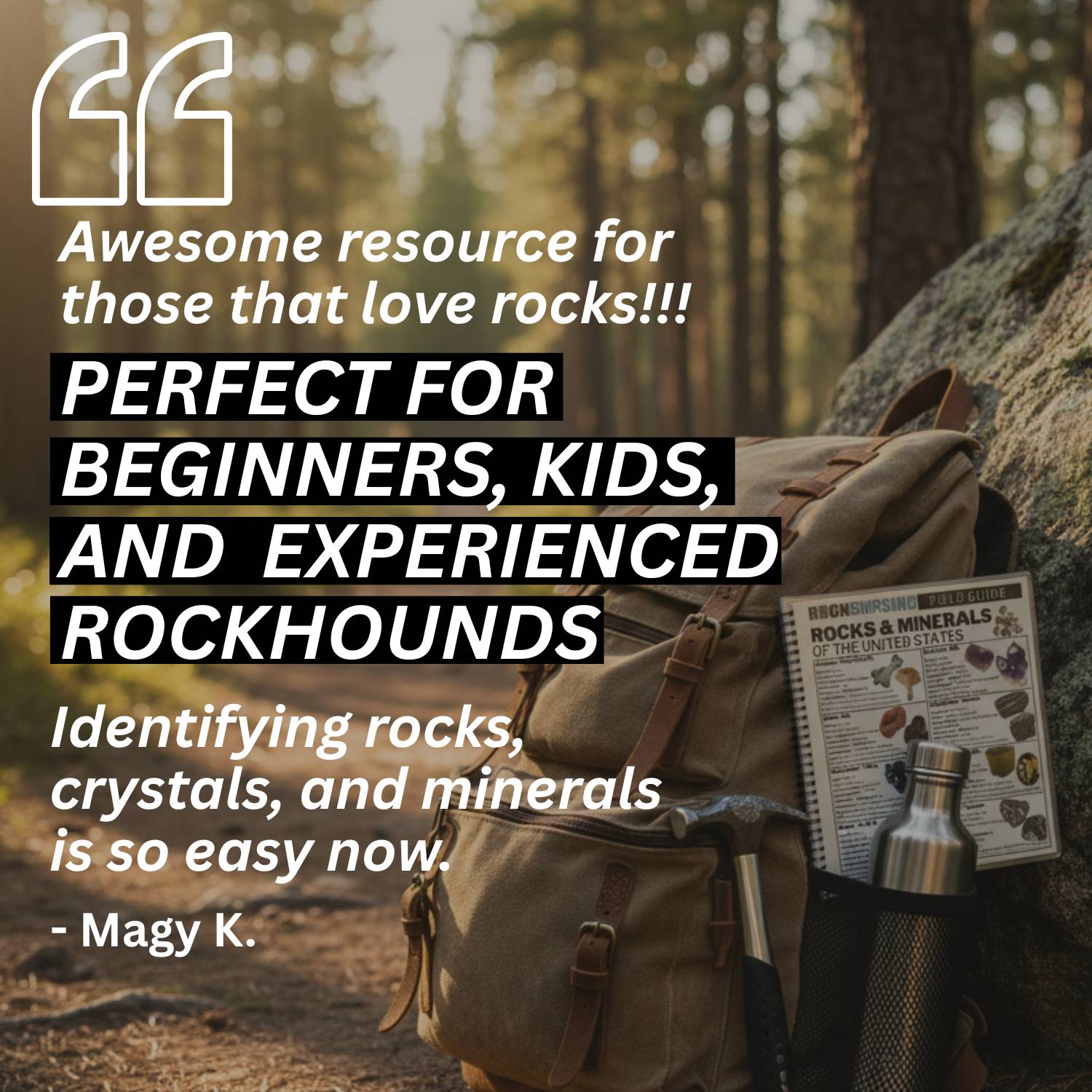Oregon is known for its rich agate deposits, but the state is vast, and the areas with the most agates are spread out across that state’s many different landscapes. It can be challenging for people looking for agates and finding their way through the vast forests, mountains, and coasts.
Weather and seasonal changes can make it harder to find agate deposits. Without knowing where to look, how the land is made, and what tools to use, you can spend hours looking and not find anything.
Lucky for you agate hunters, there are many ways to find success, including our guide. From the well-known beaches of Newport and Lincoln City to Graveyard Point and Richardson’s Rock Ranch, your trip to Oregon to look for agates can be very rewarding!
What is Oregon Agate?
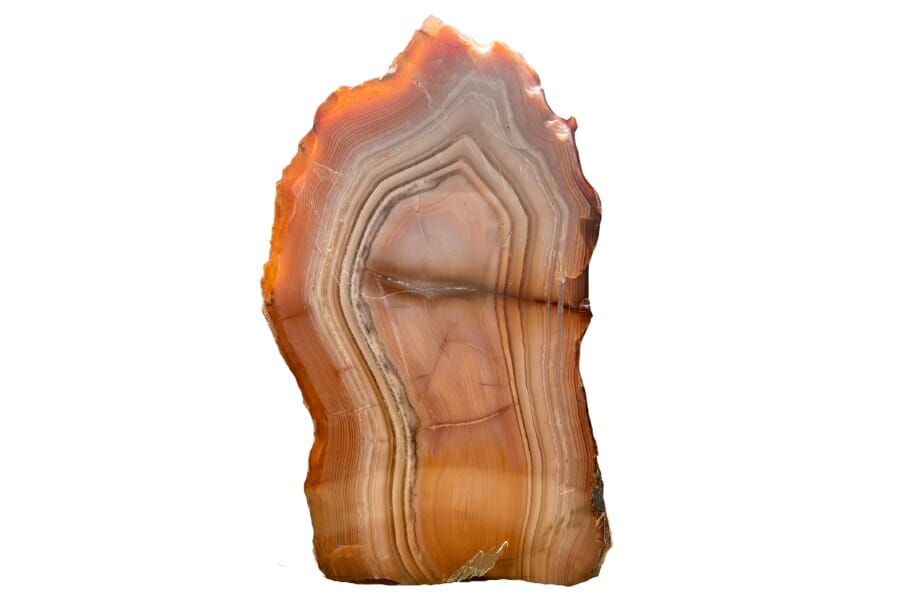
Oregon agates are renowned for their striking colors, including red, orange, yellow, blue, and purple. The intricate patterns make each agate a unique piece of art.
Agates are made when tiny pieces of silica slowly build up inside holes or spaces in rocks. As layers of silica build up over time, they make bands of different colors and textures that circle the center of the agate.
Along the Oregon coast, agates can be discovered on sandy beaches where the constant action of the waves has exposed them. The state’s volcanic history has also contributed to the formation of agates in various mountainous regions, including the Ochoco Mountains and Steens Mountain.
If you’re wondering about their value, you can use this article to determine how much agates are worth.
Blue Lace Agate
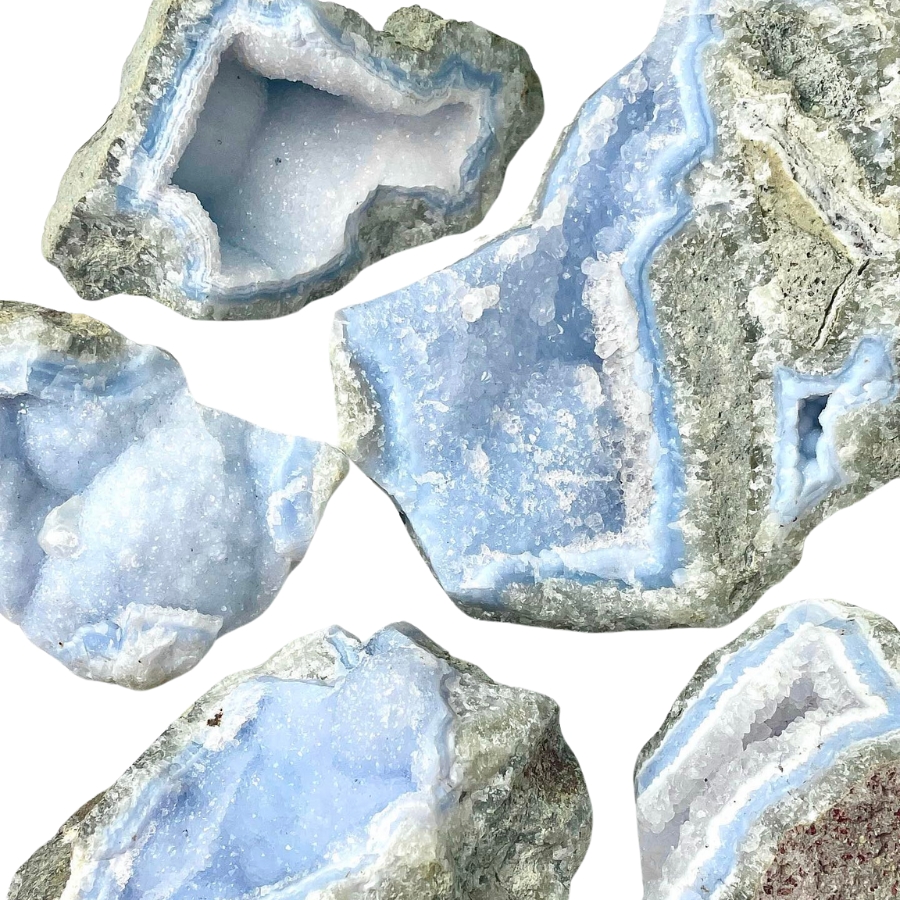
Blue lace agate is like the soft, sky-blue waves with lines that swirl and twist like delicate lace.
Its pattern comes from slow-forming layers of quartz, which create those beautiful, lace-like bands.
The bands of this agate type are often in shades of light blue, white, and sometimes a bit of grey. It’s different from other agates, which usually have more intense colors and stronger patterns.
The value of blue lace agate lies in its soft, tranquil look and the feeling of calm it brings. It’s often used in jewelry or as a decorative stone.
If you want REAL results finding incredible rocks and minerals you need one of these 👇👇👇
Finding the coolest rocks in isn’t luck, it's knowing what to look for. Thousands of your fellow rock hunters are already carrying Rock Chasing field guides. Maybe it's time you joined the community.
Lightweight, mud-proof, and packed with clear photos, it’s become the go-to tool for anyone interested discovering what’s hidden under our red dirt and what they've already found.
Join them, and make your next rockhounding trip actually pay off.
What makes it different:
- 📍 Find and identify 140 incredible crystals, rocks, gemstones, minerals, and geodes across the USA
- 🚙 Field-tested across America's rivers, ranchlands, mountains, and roadcuts
- 📘 Heavy duty laminated pages resist dust, sweat, and water
- 🧠 Zero fluff — just clear visuals and straight-to-the-point info
- ⭐ Rated 4.8★ by real collectors who actually use it in the field
Moss Agate
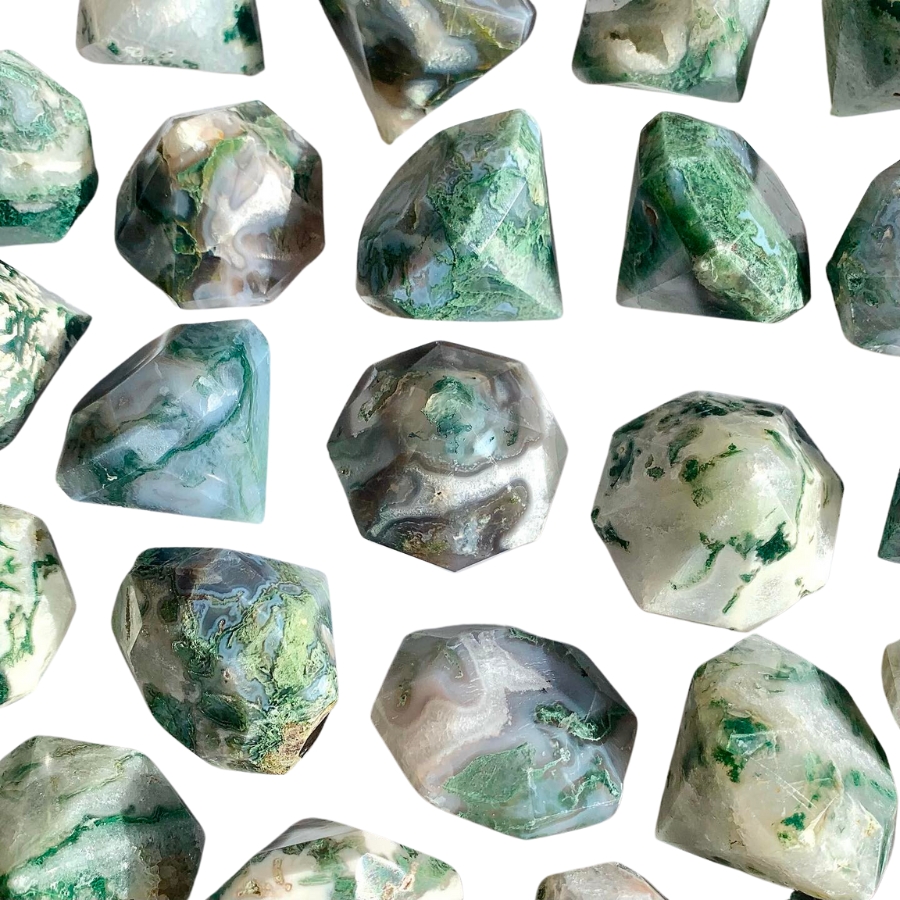
Instead of having the typical banding for which the different types of agates are known, moss agate has green inclusions that look like moss or trees.
These green patterns aren’t real plant material, though. They’re minerals like chlorite or iron oxide.
In some cultures, this type of agate is known as the “gardener’s stone” because of its green, plant-like appearance. It’s believed to help plants grow.
The price of moss agate can vary. It’s often quite affordable, but the more distinct and picturesque the green patterns, the more it might cost.
Fire Agate
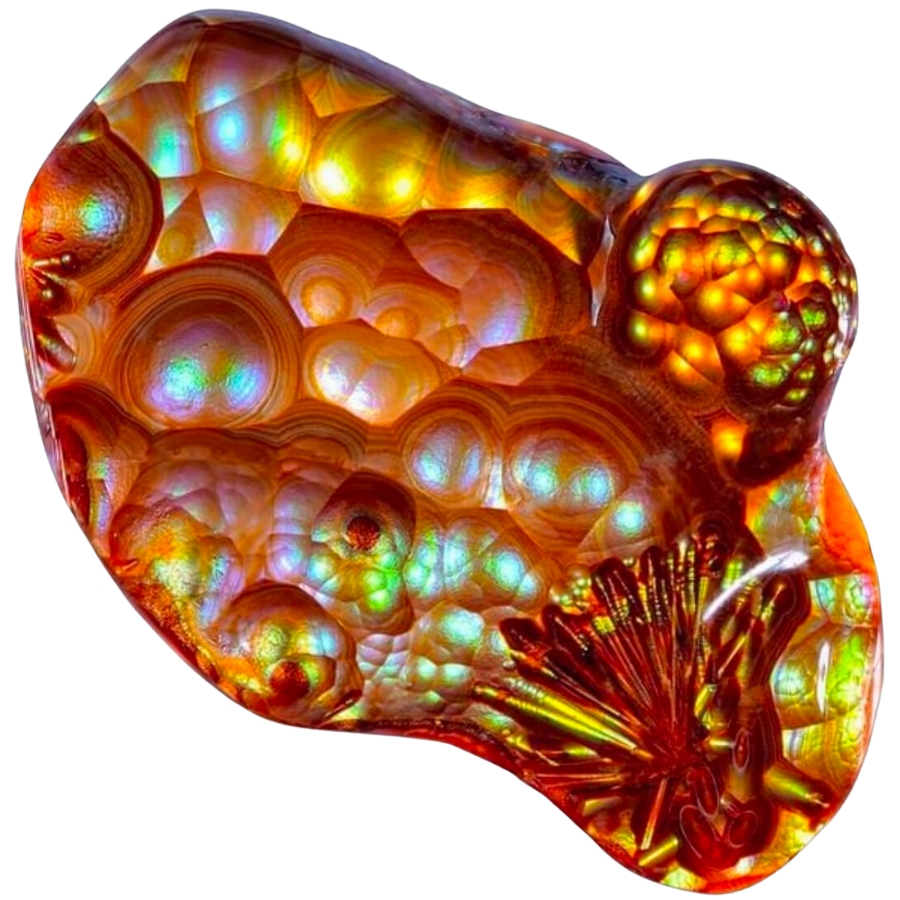
Fire agate is known for its incredible colors and the way it sparkles like fire. It’s got layers of silica and iron oxide that reflect light, creating a fiery effect.
When you look at fire agate, it’s like seeing flames trapped inside. Its colors can range from reds and oranges to greens and golds, all shimmering under the surface.
You might be wondering, “What is fire agate worth?” Well, its value comes from its rare beauty. The more color and sparkle, the more valuable the stone is.
Its fiery iridescence and lively play of color are used in jewelry pieces that are meant to stand out.
Dendritic Agate
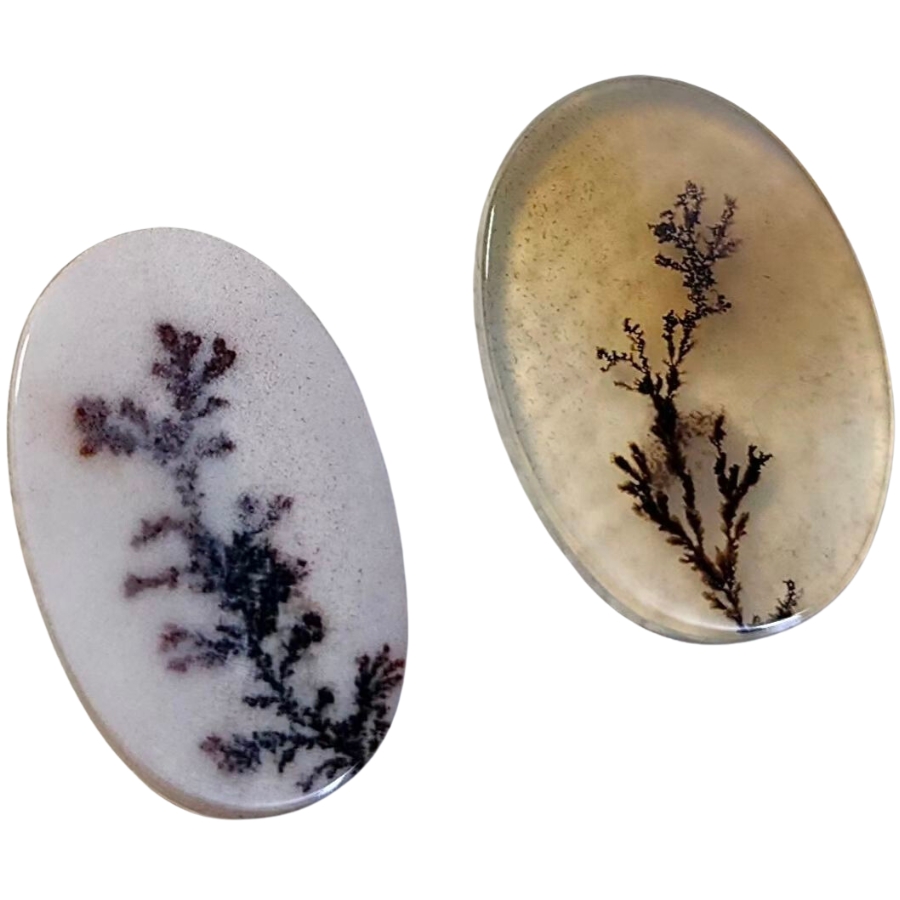
Dendritic agate is known for patterns that look like tiny trees or shrubs. Like moss agate, these patterns aren’t actual plants. They’re made of minerals, mostly manganese or iron oxides.
When you look at a dendritic agate, it’s like peering into a miniature forest or a frosty winter landscape.
The base of the stone is usually translucent to opaque, and the “dendrites”— those tree-like patterns— are often black or brown.
When it comes to how much dendritic agate is worth, it can vary. The more detailed and distinct the patterns are, the more it’s usually valued.
In some cultures, dendritic agate is believed to bring fullness and richness to life.
Crazy Lace Agate
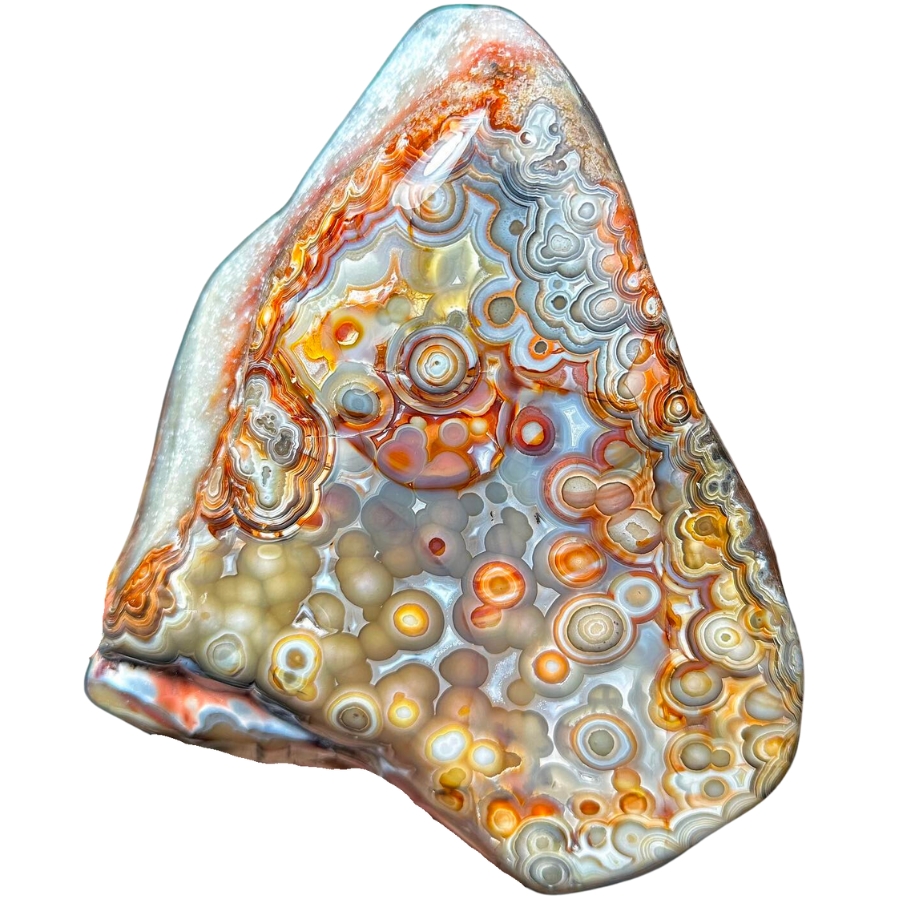
Crazy lace agate is like a party in a rock! It’s got swirls, circles, and all sorts of wild patterns dancing across it.
Its colors can be a mix of red, orange, yellow, and brown, and sometimes even a bit of gray or white.
What makes crazy lace agate stand out is its vibrant and complex patterns. No two pieces are the same. This distinctiveness is a big reason why it’s so valued.
Despite its wild and ‘crazy’ appearance, it’s sometimes called the “Laughter Stone” or “Happy Lace” because of the joy and positive vibes it’s believed to bring.
Laguna Agate

Laguna agate has incredibly sharp and fine banding. It has layers of red, orange, pink, yellow, and sometimes even purple and white all stacked in neat, tight bands.
These bands can form eye-catching patterns, like swirls, loops, and even landscapes.
The different colors of its bands come from various minerals present in the water at the time of its formation.
Laguna agate is considered one of the finest agates in the world due to its exceptional banding. This high regard among agate varieties makes it a prized possession for collectors.
Condor Agate

Condor agate is a real standout. It’s known for its bright, vivid colors and complex patterns.
It has reds, oranges, yellows, and sometimes even blues and greens all swirling together. These colors form in bands or in more random, artistic patterns.
The intensity and variety of its colors is what makes condor agate so special. It’s often used by artists and craftsmen who want to make a statement with their work.
Condor agate’s bold colors and patterns can turn a simple piece of jewelry or art into something really eye-catching.
Fortification Agate (Banded Agate)
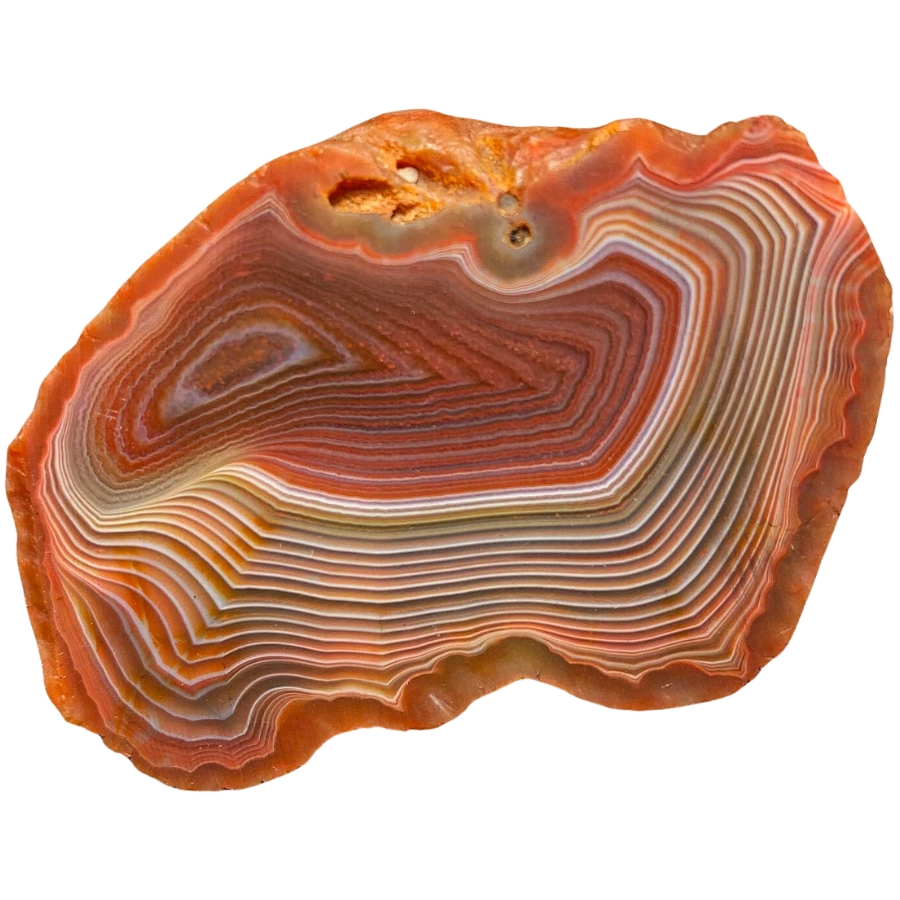
Fortification agate gets its name because the patterns inside it look like the aerial view of a fortified city.
Imagine seeing bands of color forming shapes that look like walls, with sharp angles and curves. They are usually in different colors, making each layer stand out.
If fortification agate is valuable, it’s because of its distinct patterns and colors. Its unique look makes it sought after for jewelry and as a collector’s item.
The clearer and more defined the patterns, the more valuable the stone can be. Some people also believe it can help with relaxation and calmness.
Iris Agate
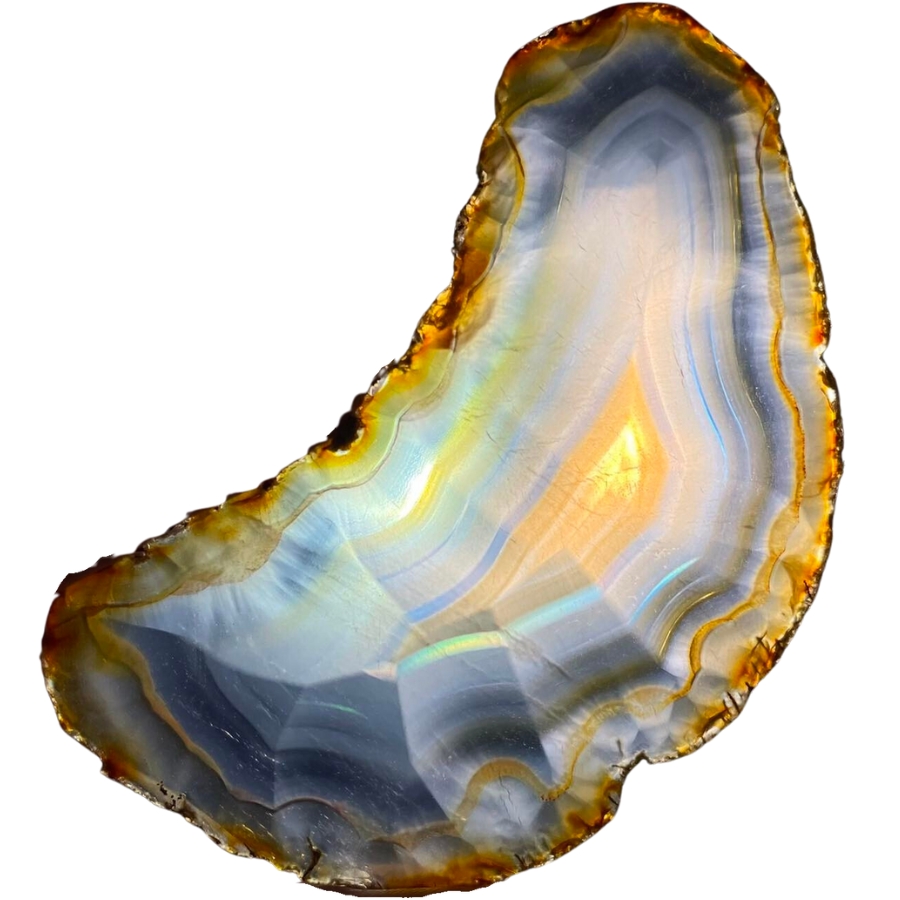
Iris agate looks like a regular agate at first, but when you hold it up to the light, something amazing happens. It shows all these rainbow colors, like light passing through a prism.
This is because it has very thin layers of silica, and when light hits these layers, it splits into all the colors of the rainbow.
The formation of iris agate is similar to other agates, but its layers are super thin, which is what creates the rainbow effect.
The value of iris agate comes from its unique ability to show these colors. In the past, people even used to think it had magical properties because of the way it showed colors. They saw it as a stone of good luck and wonder.
Plume Agate
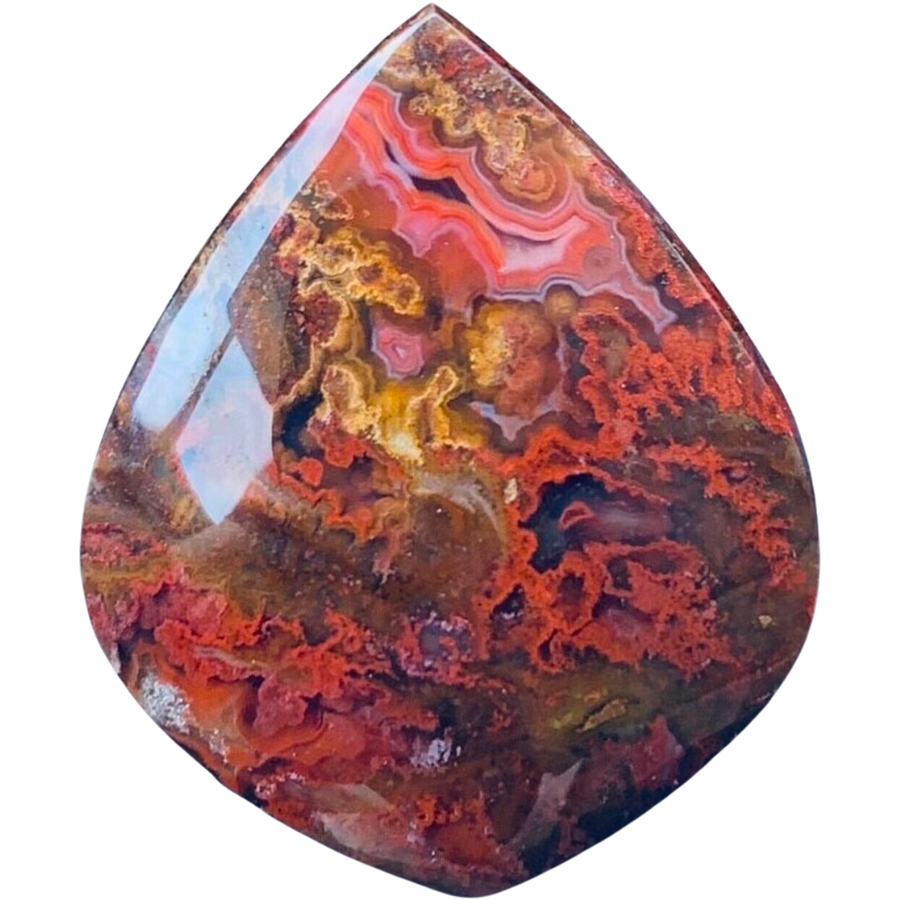
Plume agate gets its name from its patterns that look like soft, feathery plumes. These plumes can be in all sorts of colors: red, black, green, or yellow, set against a translucent or opaque background.
The way these plumes seem to float in the stone makes it look like a frozen underwater scene or like feathers caught in a breeze.
The plumes are made of minerals like manganese or iron oxide, which get trapped in the silica during the agate’s formation and create the feathery patterns.
The price of plume agate can vary depending on how clear and intricate the patterns are. The more detailed and colorful the plumes, the more the stone is usually worth.
Picture Agate (Scenic Agate)
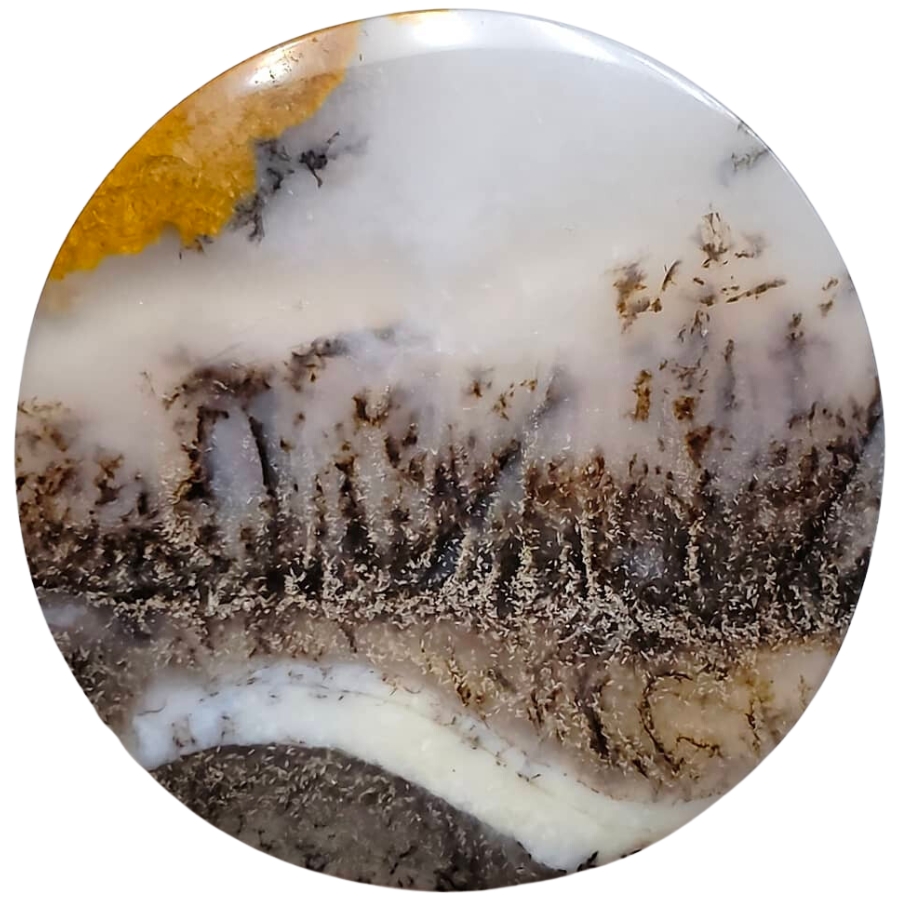
Picture agate is like a snapshot of nature captured in stone because it looks like it has pictures or scenes right inside it.
These “pictures” are actually natural patterns that resemble landscapes, mountains, trees, or even skies. They are usually in different shades of brown, white, and gray against a more translucent background.
The different patterns in picture agate or what’s also called scenic agate are made by various minerals in the water filled with silica that forms it.
If you’re thinking, “What is picture agate worth?“, its value comes from how distinct, clear, and detailed the natural “pictures” are.
Turritella Agate
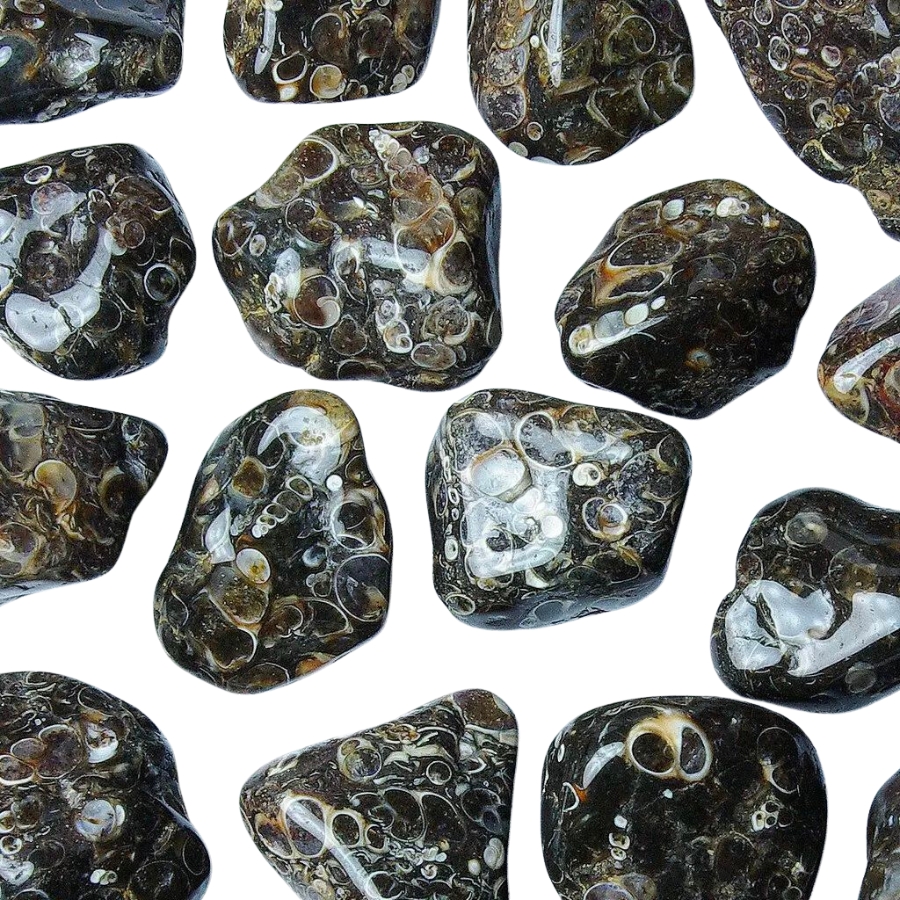
Turritella agate is not your typical agate because it’s full of fossilized snail shells! The shells belong to a creature called Turritella, a type of sea snail.
These shells are tightly packed and create a pattern that looks like a bunch of tiny, swirling towers. The background of the agate is usually a dark, earthy color, which makes the white or cream-colored snail shells really pop.
Over millions of years, these snail shells got buried in sediment and eventually became fossilized. As time went on, silica-rich water flowed through the sediment, turning it into the agate we see today.
The value of turritella agate comes from its unique blend of geology and history. More than a pretty stone, it’s a piece of ancient life preserved in rock.
Fairburn Agate
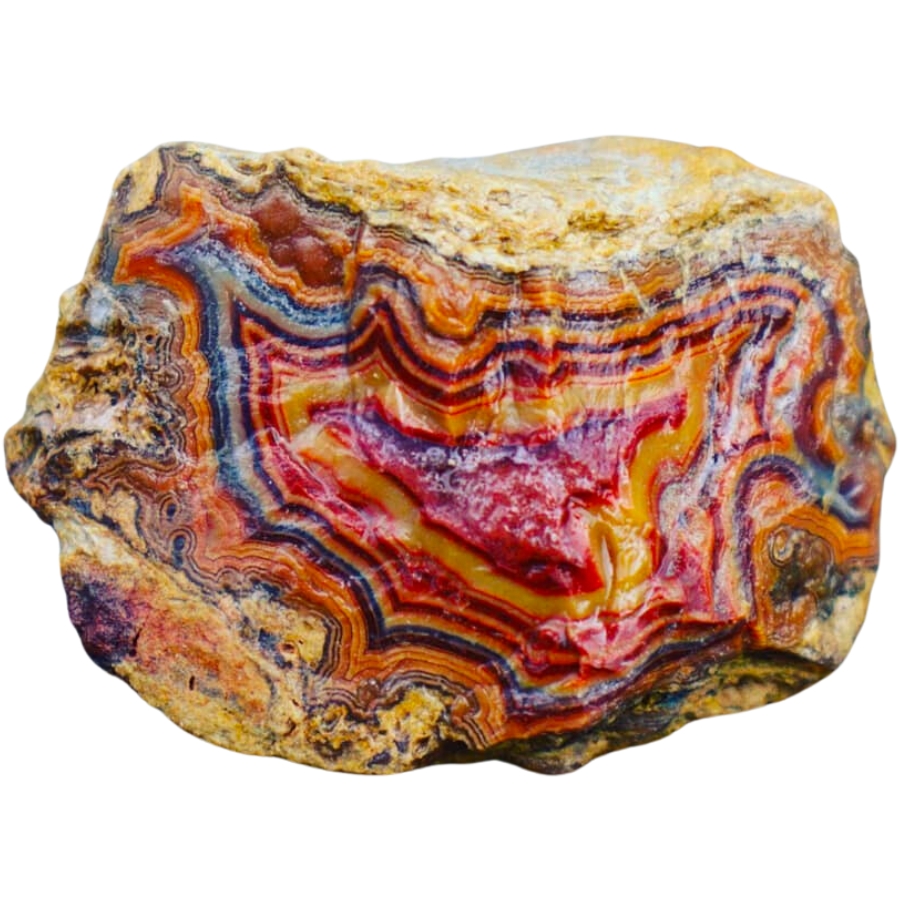
Known for its intricate patterns and bold colors, Fairburn agate is another fascinating type of agate. It usually has bands and swirls of different colors like red, yellow, orange, brown, and sometimes even pink or purple.
What’s special about these patterns is they often look like they’re in layers, creating a 3D effect. It’s like looking at a landscape made of stone.
It’s named after a place called Fairburn in South Dakota. This gives a clue about where it was first discovered.
People value Fairburn agate for the skill it takes to cut and polish it, which makes the patterns and colors really stand out.
Sagenite Agate
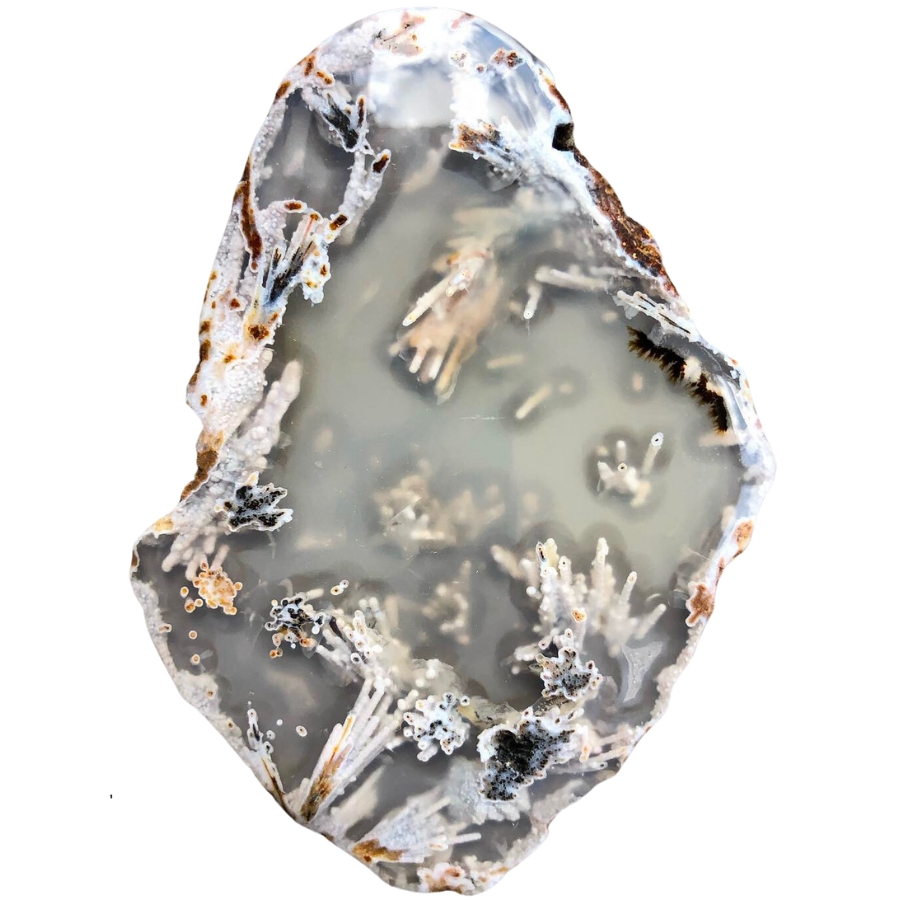
Sagenite agate has needle-like inclusions that look like tiny sprays of crystals inside it. They can be gold, silver, black, or even green, and they spread out in all directions, creating an amazing pattern.
The base of the agate is usually translucent, which lets you see these intricate needle patterns clearly.
These patterns are actually other minerals, like rutile or goethite, that get trapped inside the forming agate. These minerals grow in a crystal shape, looking like needles or hair.
Sagenite agate is often used in jewelry and other decorative items, with some people thinking that its needle patterns look like fireworks or starbursts.
Tree Agate

Tree agate, as its name suggests, looks like it’s got tiny trees or branches inside it. These tree-like patterns are usually green and spread out against a white or light gray background.
The green patterns aren’t actual trees, though. They’re made of minerals like chlorite or manganese.
Each piece of tree agate is different. You won’t find two that are exactly the same. It’s valued for its looks and it’s often used in jewelry and decorations.
Some people believe that it can also bring a sense of peace and connection to nature.
The key factors in our recommendations are:
- The deep experience and understanding of our team about the area
- Recommendations from local groups and clubs
- How easy it is to get the a particular location
- Safety and potential hazards when collecting
- Weighing private and public locations
- The ability for both experienced and novice agate enthusiasts to find great samples
With these factors in mind we’ve been able to put together a fantastic list that just about anyone can use!
Kids. Beginners. Pros. Doesn’t matter. This book has become the go-to because it works for everyone.
Magy put it bluntly: “Identify rocks, crystals and minerals is so easy now!”
That’s not by accident, the photos are crisp, the callouts are simple, and the design is rugged enough to throw in a backpack without worrying. Whether it’s your first geode or your hundredth, this guide keeps the fun part simple: finding more treasures.
The Best Spots To Find Agates in Oregon
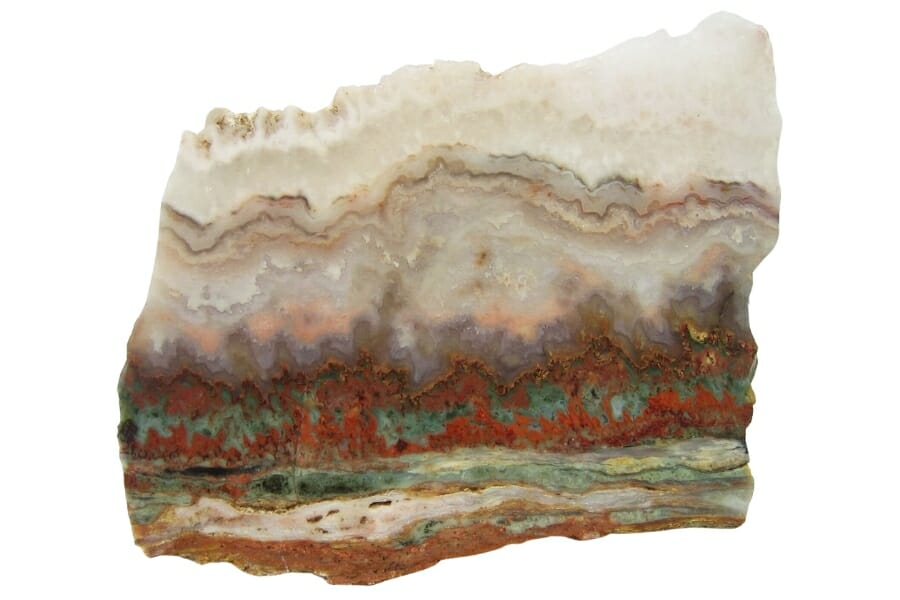
Here are our recommendations for the best places in Oregon to look for agates. Even though there are several great places to look for gems in Oregon, not all are suitable for finding agates.
Always Confirm Access and Collection Rules!
Before heading out to any of the locations on our list you need to confirm access requirements and collection rules for both public and private locations directly with the location. We haven’t personally verified every location and the access requirements and collection rules often change without notice.
Many of the locations we mention will not allow collecting but are still great places for those who love to find beautiful rocks and minerals in the wild without keeping them. We also can’t guarantee you will find anything in these locations since they are constantly changing.
Always get updated information directly from the source ahead of time to ensure responsible rockhounding. If you want even more current options it’s always a good idea to contact local rock and mineral clubs and groups
Crater Lake National Park
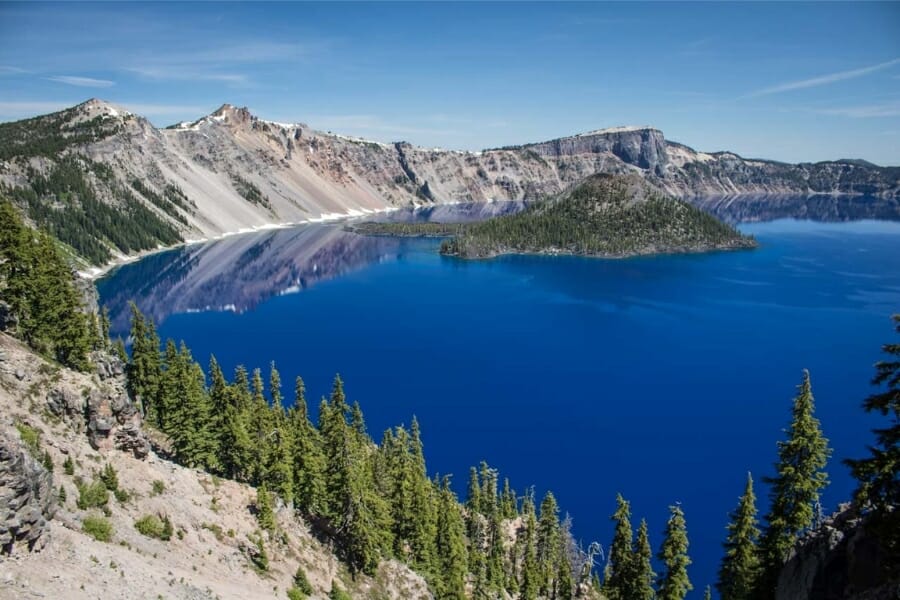
Crater Lake National Park is a stunning natural wonder in southern Oregon. It’s known for its beauty and geological importance. The park’s center is Crater Lake, a deep blue lake formed in the caldera of an old volcano called Mount Mazama.
Different agate deposits have formed here because of the area’s volcanic history and the erosion caused by glaciers. The distinct volcanic rocks, weathering, and erosion have exposed these gems, making them easy to find.
Before you bring your agate crystals home, know the most up-to-date rules about collecting in Oregon.
Where we found agates in Crater Lake National Park
Crater Lake, Cleetwood Cove, is a popular access point for boat tours. The shoreline here offers opportunities to find agates, especially in areas where wave action and erosion have exposed them.
The Wizard Island is a volcanic cinder cone within Crater Lake that provides access to the lake’s water. You can take a boat tour to reach Wizard Island and explore its shoreline, where agates can sometimes be found.
The Pumice Desert, located on the park’s eastern side, is covered in volcanic ash and pumice. Agates may be discovered within the pumice deposits, particularly in areas where the loose materials have been exposed to erosion.
Ochoco National Forest

Due to its rich geological history, the Ochoco National Forest offers a favorable environment for agate seekers. The region’s volcanic activity and ancient lava flows have contributed to the formation of agate deposits.
These gemstones can be found in various forms, including embedded within rocks, scattered in gravel beds, or along streambeds. The forest’s diverse landscapes, ranging from rolling hills to deep canyons, allow rockhounds to explore and discover hidden treasures.
Where we found agates in Ochoco National Forest
The Big Summit Prairie area is one of the most exciting places to look for agates in the forest. You can look for agates in gravel deposits and exposed rock formations.
The prairie is open and easy to get to, which makes it easier to explore and gives you a better chance of finding unique agates. You might be able to find water-worn agates along the banks of nearby creeks and rivers.
South Umpqua River

The South Umpqua River is a beautiful river known for its beautiful scenery and many natural resources. It’s a great place to look for agates because of the geological features and riverine environment that make it easy for these beautiful stones to settle and be found.
The constant flow of the river and the erosion along its banks reveal agates buried in the sediment and gravel. Agates come in many sizes and shapes, from small pebbles to large pieces. Their unique patterns and bright colors make them popular with collectors and jewelry makers.
Where we found agates in the South Umpqua River
You might find agates if you look around the riverbanks and sandbars of the South Umpqua River. Agates are often found in gravel bars forming along a river’s path.
You can access these deposits by carefully searching the exposed areas, especially after a higher water flow when new agate specimens may have been exposed.
Warm Springs Reservoir

This reservoir, made by the Warm Springs Dam on the Middle Fork of the Malheur River, is a good place for people interested in agates to look for and find these beautiful stones.
Warm Spring Reservoir is an excellent place to find agates because of how its rocks are made. Along the reservoir’s shoreline, rocks and pebbles, including agates, have been exposed to erosion and sediment buildup.
New agates can always be found because the water is constantly moving and the seasons change. This makes it an excellent place for rock hunters because the landscape constantly changes.
Where we found agates in Warm Springs Reservoir
Because the water level in the reservoir rises and falls, gravel bars are often along the shoreline. These places can be good places to find agates because the water constantly moves, and the sediment always falls.
Carefully search the gravel bars and look at the different rocks and pebbles.
Winchester Bay
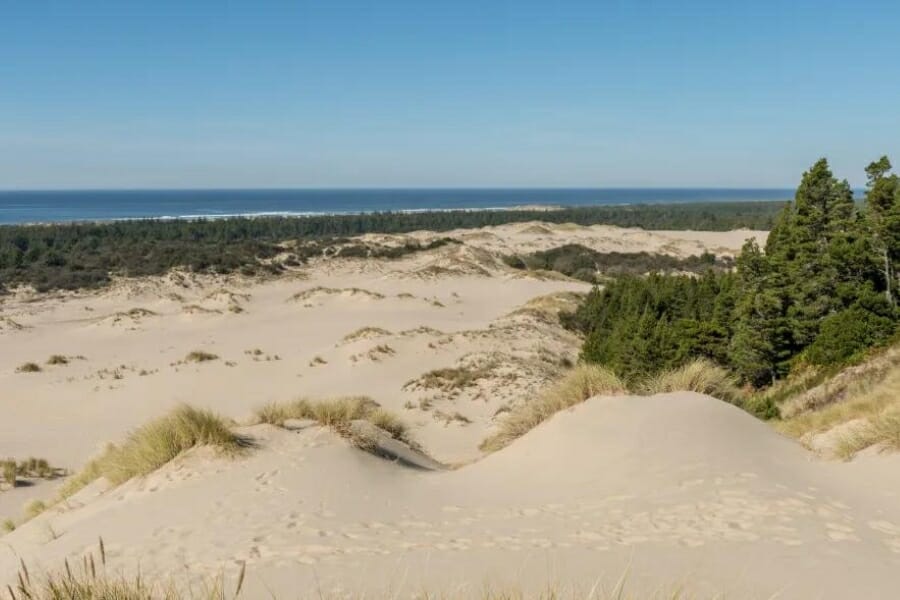
Winchester Bay is known for its beautiful scenery and the fact that it is an excellent place to look for agates. This area along the coast has a unique environment where land, sea, and geology come together to make it easy for agates to form and be found.
The extensive beaches and changing shoreline of Winchester Bay give agate hunter plenty of places to look for these beautiful stones. The constant action of the waves and the erosion of the coast help to find agates that have been smoothed and tumbled by the ocean.
Where we found agates in Winchester Bay
The sandy beaches and outcroppings of rocks in the bay are great places to look for agates. When more of the beach and rocks are exposed at low tide, it’s the best time to look for these gems.
Other Great Places To Find Agates in Oregon
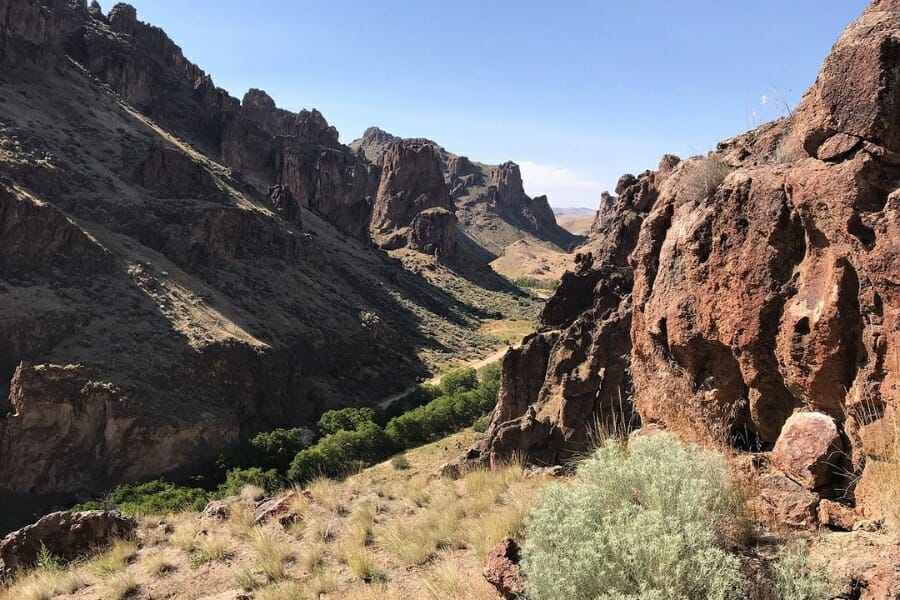
Even though we’ve already provided the top locations in Oregon to look for agates, we’ll also provide you with more suggestions. We sorted them by county to make things easier.
Our recommendations by county
| County | Location |
| Baker | Shirttail Creek |
| Benton | Willamette River and its tributaries |
| Clatsop | Nehalem River low-water stream gravels |
| Columbia | Gravel bars of Clear Creek |
| Crook | McAllister Butte |
| Crook | Powell Butte |
| Crook | Ochoco Nodule Beds |
| Crook | Bear Creek |
| Crook | Taylor Butte |
| Crook | Carey Agate Beds |
| Crook | Shotgun Creek |
| Curry | Rogue River |
| Harney | Harney Valley |
| Jackson | Big Butte |
| Jackson | Green Springs Mountain |
| Jackson | Table Rock |
| Jackson | Lost Creek Reservoir |
| Jackson | Fulton Agate Beds |
| Josephine | All area surrounding Oregon Caves |
| Josephine | Althouse Creek |
| Klamath | Klamath River |
| Lake | Crane Canyon |
| Lake | Hart Mountain |
| Lake | Klamath Falls |
| Lane | Mt. Pisgah |
| Lane | Lookout Point Lake |
| Lincoln | Agates Beach |
| Lincoln | Commings Creek |
| Linn | Calapooya River |
| Linn | Chandlar Mt. |
| Linn | Thistle Creek |
| Malheur | Willow Creek Reservoir |
| Malheur | Jordan Creek |
| Malheur | Succor Creek Canyon |
| Willow | Lower Inmaha River |
| Wasco | Mutton Mountain |
| Wheeler | Clarno Fossil Beds |
Additional areas you can find agates
We want to make sure your search is successful because Oregon is large. You must search in these areas where agates are frequently found.
Beaches
Because of their unique qualities and processes that make them perfect habitats for agates, beaches are popular destinations for collectors. The consistent wave motion along the shoreline significantly influences agate development and exposure.
Rocks are gradually crumbled by the waves’ constant battering, revealing these agate-filled cavities. The agates are eventually released by this natural erosion process and are left on the beach for collectors to find.
Rivers and riverbanks
Rivers are potent erosional agents that continuously reshape the environment and reveal geological treasures. Agates embedded initially in the rocks are now exposed due to the erosion caused by the flowing water.
Due to this natural erosion and deposition, agates can be concentrated in specific locations, such as gravel bars and exposed riverbeds. As denser than many other rocks and minerals, agates tend to settle in areas with slower currents or eddies along the riverbank.
These pockets and depositional areas become havens for agate collectors, who can search through the sediment for these captivating gemstones.
Streams and creeks
Agate hunting is made more accessible and visible by the accessibility and size of streams and rivers. Collectors can more closely examine the streambed and search for agates uncovered or partially buried by the water’s passage, thanks to the smaller channels and shallower waters.
Agates’ unusual patterns and hues are easier to find because of the cleaner water in streams and rivers. They are propelled along a stream or creek by the power of the water, finally being left behind in quieter places like gravel beds, bends, and eddies.
Common Agate-Hunting Questions
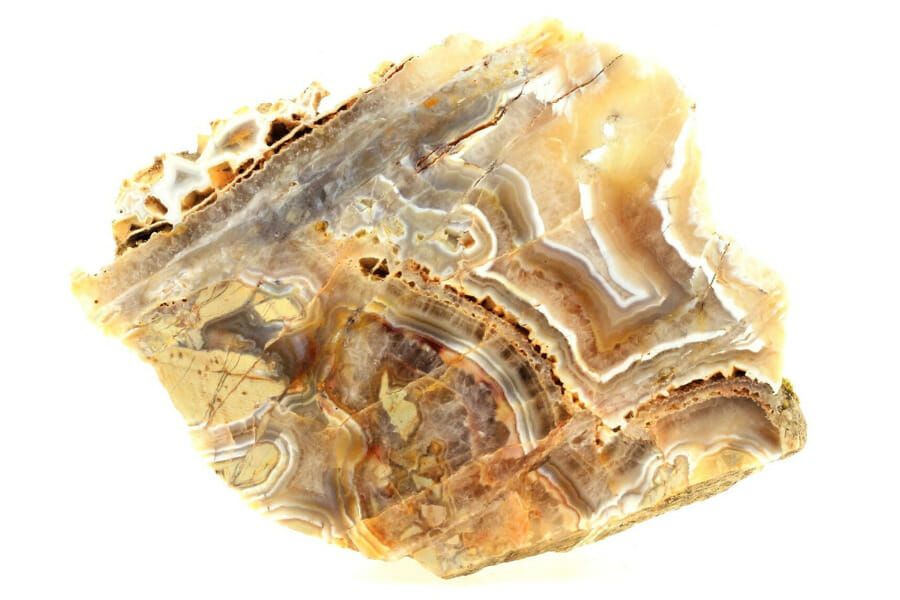
It’s essential to understand the responses to the following inquiries that are frequently made concerning agates in Oregon.
Is it illegal to collect agate in Oregon?
As long as you abide by the laws, you can collect agates in Oregon. You should comply with the rules whenever you are in a public area. Ensure you have permission before entering any private property.
The Best Places To Buy Agates In Oregon

Not everyone likes to spend all day looking for agates outdoors. Sometimes all you need is a display or a specimen to add to your collection. Here’s a list of places where you can buy agate crystals in Oregon:
- 5 Elements Gem and Mineral – 2100 W Broadway, Eugene, OR 97402
- Cosmic Crystal Collective – 1100 E Main St Suite 102, Medford, OR 97504
- The Crystal Crossroads – 200 W 1st St, Newberg, OR 97132
- Ed’s House of Gems – 7712 NE Sandy Blvd, Portland, OR 97213
- Flux Crystals – 280 W Broadway, Eugene, OR 97401
If you have any recommendations for our list please leave a comment below!


